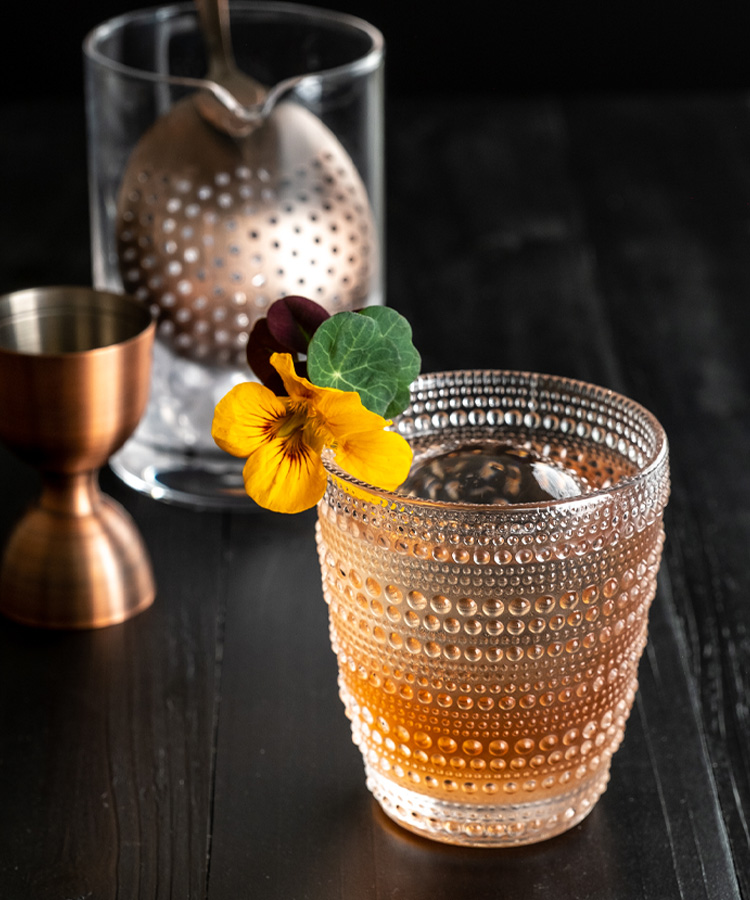
From June 25 – August 31, enter and complete the Cognac Connection Challenge for the chance to earn one of 10 $1,000 cash prizes.
When you put two beautiful words together, beautiful things happen — Bogie and Bacall, brie and baguettes, boeuf and Bourguignon. Add to that list “Cognac” and “connection.” Beautiful words on their own (a supple, quality wine spirit and the thing we’re all starving for after over a year in Zoom), Cognac and connection pair together magically.
Case in point: The Cognac Connection Challenge. The French-inspired, U.S.-based cocktail contest is now in its second year and aims to gather over 100 bartenders from across the country to compete in one exciting challenge: craft a Cognac cocktail to bewitch palates, blow minds, and break down outdated assumptions about the lively spirit.
After crowning 10 winners in 2020, the Cognac Connection Challenge is returning for a second run — and the timing couldn’t be better. We’re inclined to knock on some wood before saying this (preferably oak), but the world is slowly returning to normal. We’re signing out of Zoom, making reservations, trading our worn-out Crocs for real shoes, and heading out into a nightlife where on-premise imbibing is back.
Now, The Cognac Connection Challenge wants to peer into every bar, and connect the nuanced French wine spirit to the innovative, technique-driven styles of the American craft cocktail scene. Moreover, it’s calling bartenders from across the United States to explore and learn more about the Cognac region, a beautiful expanse of six crus just north of Bordeaux, to draw some serious inspiration. There, a patchwork of limestone, chalk, and clay terroir celebrates centuries of technique and creates a liquid unlike any other in the world.
And Cognac is an incredibly unique product, a distinct category that contains its own broad range of flavors, textures, and aromatics, making it perfect for neat sipping and cocktail mixing. As with Bordeaux, or Champagne, or even Scotch, the variety in Cognac has everything to do with its terroir and production. The six crus of the region were originally designated based on soil content. Varying degrees of limestone, clay, sand, and chalk yielded different flavor profiles in the grapes. That’s why, to this day, Cognac from the Grande Champagne cru tastes decidedly different from Cognac from the Bons Bois cru, or the Borderies cru. The other three regions are Petite Champagne, Fins Bois, and Bois Ordinaires, and each has its own terroir, coaxing different flavors from the grape.
As for the grapes, most Cognac is 90 percent Ugni Blanc, though producers can choose to blend in a small portion of Colombard, Folle Blanche, and an even smaller portion of Semillon, Jurancon Blanc, Blanc Rame, Folignan, and Montils. Then, there’s variety in distilling. While all wine eaux-de-vie must be double-distilled in beautiful copper Charentais alembic stills, distillers have the option to decide how much of the “heads” and “tails” of the distillate to include in the final product. These are important decisions, as every move can alter texture, body, and prominent flavor notes in the final product.
And then, Cognac has very specific aging standards. All Cognac is aged in oak barrels. Just like with Burgundy, Bordeaux, or even Scotch, Cognac producers take their oak barrels very seriously. Cognac is aged in oak barrels made with wood from the first few meters of one of two species of oak tree that’s usually 125 to 200 years old. After aging, a majority of Cognacs are blended, which further impacts the final flavor profile.
Age designations vary based on the youngest eau-de-vie in a given blend. In this way, two years in oak makes a “Very Special” (or “V.S.”) Cognac. Double that for four-year-aged “Very Superior Old Pale.” Finally, any blend that is at least 10 years old is designated by “X.O.,” or “Extra Old.”
With this variety of factors in Cognac production, you get a range of flavors, aromatics, and mouthfeels that make the liquid an ideal cocktail ingredient. In fact, it’s been used in cocktails for quite some time — see the Sidecar, the classic Champagne Cocktail, or the Vieux Carré. The category offers a lot of room to play with, especially as we head back into bars and restaurants. And that’s what The Cognac Connection Challenge does: It invites bartenders to shake –– or stir –– it up.
No shock: The results in 2020 proved Cognac and cocktails are a beautiful pair indeed, with Cognac allowing for maximum creativity. Competition judge and VinePair staff writer Tim McKirdy noted that Cognac actually allowed competing bartenders to construct their recipes around distinct flavors, saying, “I was really impressed to see so many contestants dial into specific tasting notes from their chosen Cognac, and build the drink around that.”
As the 2021 competition approaches and the year continues (knock on French oak) to open up, we’re looking forward to reconnecting — with friends, family, bartenders, and all the possibilities in a bottle of Cognac.
This article is sponsored by Cognac.
